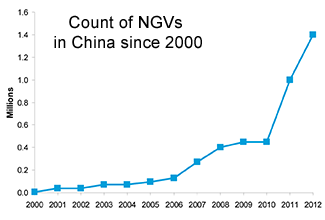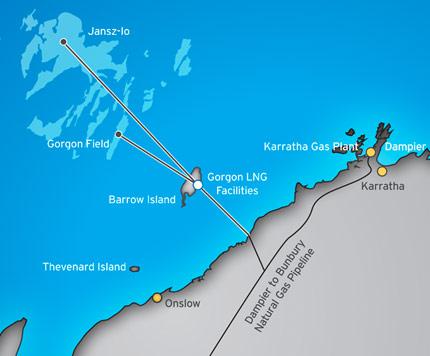Of course, I fail to see any historical precedent for your judgement. When did we EVER rely on a single source of power?
We came pretty close with oil. Fortunately we are now creating alternatives.
Of course, I fail to see any historical precedent for your judgement. When did we EVER rely on a single source of power?
We were never even close with oil. We always had coal and wood and hydro in that mix. Please don't makeup fairy tales to support your position.We came pretty close with oil. Fortunately we are now creating alternatives.
Very unlikely IMHO. Most of the cost of electric power is capital. Fusion reactors have many very costly to produce technologies. Large volume of very strong magnetic fields produced by super conducting currents. They alone cost (capital) much more than a simple furnace burning fuel. Both systems end up making steam for the same cost electric generator.... What, fusion? Heck, if it ever works and becomes more economical than everything else, ...

I'm not sure, but think you can see their "1 foot diameter" motor behind the wheel spokes. Is it an "in wheel motor" as I suspect it is?" I also bet that if a wheel is "over torqued" tending to slip, the computer can reduce the torque applied. Sort of ABS for acceleration as well as braking. If true, no wonder their 0 to 60 numbers look good.http://www.fool.com/investing/general/2013/08/31/3-reasons-why-tesla-is-an-industry-game-changer.aspx said:Tesla cars are manufactured in a far different manner than traditional vehicles. They have one standard battery platform on which they can mount varying motors and bodies. Even more, Tesla's motor is a paltry one-foot in diameter. This swappable production strategy could very well give the company an advantage in achieving production efficiencies.
It's not just a single car; we created something on which we could build many cars, and we are able to leverage that and bring a car to market fast," Musk explained at the Model X unveiling.
That is what a "nude Tesla" looks like.I'm not sure, but think you can see their "1 foot diameter" motor behind the wheel spokes. Is it an "in wheel motor" as I suspect it is?"
I also bet that if a wheel is "over torqued" tending to slip, the computer can reduce the torque applied. Sort of ABS for acceleration as well as braking.

Here is where the LNG for Asia will come from in about 2 years:http://seekingalpha.com/article/1669912-nat-gas-transportation-china-is-trouncing-the-u-s-at-its-own-game?source=email_macro_view&ifp=0 said:despite natural gas prices that are {NOW, soon cheaper- more below} ~4x higher, China is beating the US at its own game: natural gas transportation. Deployment of natural gas vehicles ("NGVs") in China is soaring. According to a Citi report, the number of NGVs in China grew by 48% in 2012 to reach 1.48 million vehicles. China could be on a path to become the world's largest NGV market according to Lux Research, a company specializing in research on advanced technologies. Lux predicts China could see annual sales of 540,000 NGVs by 2015; India would sit at second place with about 250,000. {China plans decades ahead.}

But soon even Quatar will not be able to economically compete with LNG made on FLNG moored over the NW Austrian NG field and off loaded to the Q-Max LNG carriers for a much shorter trip to China.http://www.energyglobal.com/news/liquid-natural-gas/articles/Qatargas_delivers_cargo_for_CNOOC_LNG_terminal.aspx#.UidmfmnD_IU said:{Published on 24/09/2012} The largest class of liquefied natural gas (LNG) carriers in the world has delivered Qatari LNG to a Chinese oil and gas giant’s LNG terminal, it emerged last week. The carrier, a Q-Max LNG vessel, was used by the world’s largest producer of LNG, Qatargas to deliver its first cargo of the resource to China National Oil Corporation’s (CNOOC) Zhejiang LNG Terminal, the Qatari firm said in a press release.
This is the first time a Q-Max LNG carrier has docked at one of CNOOC’s terminals in China, and the cargo delivered will be used to commission the newly constructed LNG terminal. First floated out of dry-dock in 2007, Q-Max ships can carry up to 80 per cent more cargo than their predecessors, while requiring approximately 40 per cent less energy per unit of cargo than conventional LNG carriers

http://www.caranddriver.com/reviews/volkswagen-xl1-concept-first-drive-review said:world’s most efficient combustion-engined passenger vehicle, and VW says the XL1 actually needs just 0.9 liter to travel 100 kilometers, which means the claimed maximum efficiency is a heady 261 mpg. So here is a car, primarily driven by a diesel engine, with minimal emissions (24 g/km of CO2 versus, say, the Prius’s 89 g/km) that can claim to be more efficient than more highly vaunted pure-electric vehicles.
The XL1’s hybrid system consists of a 47-hp, 800-cc two-cylinder TDI turbo-diesel engine, a 27-hp (20-kW) electric motor, and VW’s seven-speed DSG dual-clutch gearbox. (The DSG is programmed to operate only in automatic mode.) The TDI and the electric motor combine to deliver maximum torque of 103 lb-ft. This amazingly compact powertrain is mounted transversely behind the passenger compartment and drives the rear wheels. A 5-kWh lithium-ion battery pack and a 2.6-gallon diesel fuel tank are nestled between the powertrain and passenger compartment.
The major factor in weight saving was the use of carbon fiber for the chassis and body panels. The center monocoque/safety cell is molded in one piece by a rapid resin-transfer process that’s quicker and cheaper than conventional hand-laid carbon. VW developed it with the Austrian company Carbo Tech.



http://news.yahoo.com/prelude-worlds-largest-ship-launches-153102193.html said:The world's largest ship has hit the water in South Korea.
The 1,601-foot, 600,000-metric-ton vessel, called the Prelude, is a floating liquified-natural-gas facility owned by Shell. According to the Telegraph, the Prelude, which floated out of dry dock at the Samsung Heavy Industries shipyard in Geoje, South Korea, took a year to build. When it officially launches in 2017, the ship is expected to produce 3.6 million metric tons of liquified natural gas per year by extracting gas from underwater seabeds off the coast of Western Australia, storing it at a frosty -260 degrees Fahrenheit.
But its the sheer size of the Prelude that has people talking. The 243-foot-wide ship is 150 feet longer than the height of the Empire State Building. It boasts three 6,700-horsepower engines, has storage tanks that have a liquid capacity equal to 175 Olympic-size swimming pools, a 305-foot-high tower and a massive hull that was constructed in halves and joined in August.

Shakespeare told a good re-organization plan: "First we kill all the lawyers..."http://www.naturalgasforums.com/smf/index.php?topic=21014.0 said:While China transitioning away from oil (gasoline and diesel) is great environmental and economic news for the rest of the planet, ... With only 135,000 NGVs, the US has less than 1/10th the number of NGVs as does China. China has grasped the potential of natural gas as an alternative to gasoline and diesel fuel and is aggressively building the necessary infrastructure to realize this potential. One only has to look at recent earnings reports and press releases to get an idea of the stark contrast between the two country's pace of progress:
Westport Innovations (WPRT), a Canadian maker of natural gas engines, said in its Q2 results that Cummins Westport shipped over 2,700 engines, while Weichai Westport (i.e. China) shipped 12,500 engines in the quarter. Clean Energy Fuels (CLNE) announced a contract to supply 416 CNG compressors to China Gas for the construction of 310 CNG public access stations in China. Chart Industries (GTLS) has sold over 500 of its Orca mobile LNG delivery trucks to move natural gas from China's coastal LNG import terminals to the country's interior. Chart is capitalizing on China's goal to replace all diesel trucks to NGVs.
What is Wrong in the US? Considering the US has the lowest natural gas prices in the world, {currently 4 times cheaper than in China!} and provides much of the technology needed to produce natural gas and enable its use in transportation sector, this begs the question: how can China be beating the US at its own game? The answer comes down to a big difference in energy policy and the make up of the two country's policymakers.
In China, engineers and scientists make up the largest percentage of policymakers. In China, engineers are admired. Engineering is considered a noble and valued profession. Former President Hu Jintao was trained as a hydraulic engineer. Premier Wen Jiabao is a geomechanical engineer. Xi Jinping studied chemical engineering. According to a Forbes article, 7 out of China's top 9 government officials were engineers in 2011. The US is a much different story. According to the Congressional Research Service 170 members of the House and 60 Senators are lawyers. Out of a total of 435 U.S. Representatives and 100 Senators (535 total in Congress), lawyers comprise the biggest voting block of one type, making up 43% of Congress. 60% of the U.S. Senate are lawyers. 37.2% of the House of Representatives are lawyers.
fully electric cars are very limited,to be practical for long distance
Congress Considering A Pay-Per-Mile Road Tax
http://gas2.org/2013/02/12/congress-considering-a-pay-per-mile-road-tax/
Guess which nation was first ever to sell 20 million cars in one year (in 2013). Hint the prize is a pair of Chop Sticks.
You'd be right. They sold 4 for every 3 sold in the US, even though 2013 was one of the best years for US auto makers in a long time.If I had to guess I'd pick China.
Thought this was particularly interesting from the US Energy Info Administration:
In 2012, the United States generated about 4,054 billion kilowatthours of electricity. About 68% of the electricity generated was from fossil fuel (coal, natural gas, and petroleum), with 37% attributed from coal.
Energy sources and percent share in 2012 were:
•Coal 37%
•Natural Gas 30%
•Nuclear 19%
•Hydropower 7%
•Other Renewable 5%
•Biomass 1.42%
•Geothermal 0.41%
•Solar 0.11%
•Wind 3.46%
•Petroleum 1%
•Other Gases < 1%
Stupid advert sneaked in there,sorryScorpius, is there a reason why the first of those links is an advert for brain-teasers?
